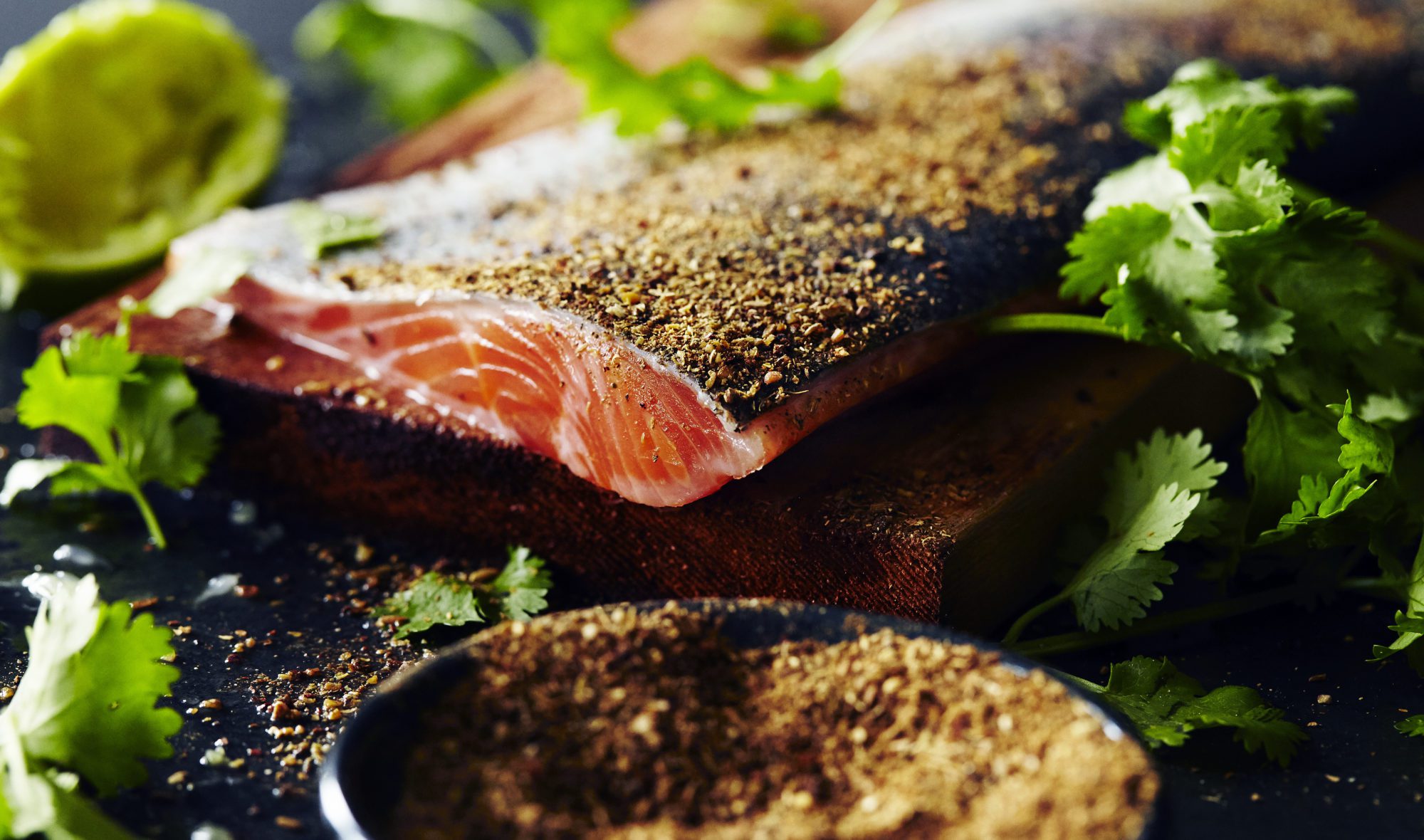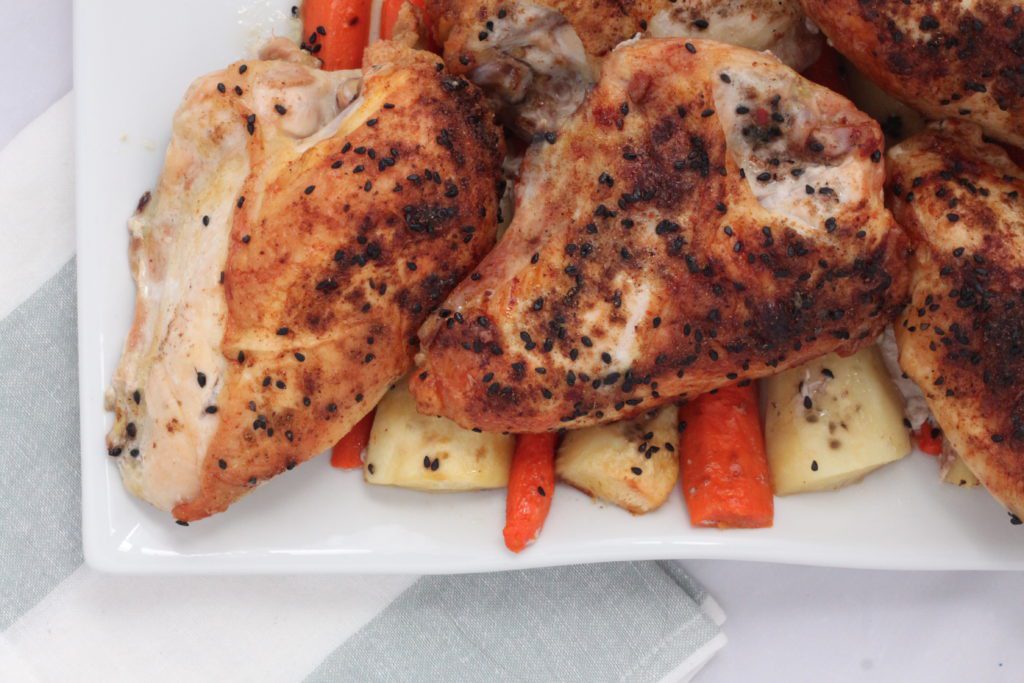
Join PN Level 2 for less than $9 USD/day! Affordable monthly payments now open.

Garam masala is a slightly sweet, peppery, and pungent blend of spices and is a common staple seasoning in Indian and Pakistani cuisines. Although in the amounts typically consumed, garam masala is not a significant source of nutrients, it does have health benefits owing to the antioxidant, blood sugar balancing, and digestive properties of the spices used in the mix. Garam masala is a versatile seasoning and can be added to both sweet and savoury preparations.
Garam masala is a slightly sweet, peppery, and pungent blend of spices. In Urdu, garam means “hot” and masala means “mix of spices”.
Many cultures around the world have blends of herbs or spices that are staples in their regional kitchens: France has herbes de Provence, Latin America has Adobo, China has Chinese five spice, and India and Pakistan have garam masala.
Traditional garam masala recipes nearly always includes peppercorns, cloves, cinnamon, cardamom, and cumin. However, it may also include nutmeg, coriander, star anise, and/or dried chilis. Less commonly it may contain turmeric, saffron or fennel, or even ground nuts or garlic and onions.
There are many permutations of garam masala, and recipes will vary according to region and personal palate.
Garam masala is a versatile seasoning and is used in both sweet (such as in rice pudding) and savoury (such as in lentil dal) preparations.
Garam masala is a combination of ground spices, and typically has a golden brown color. It is highly aromatic, and depending on what spices are used in a particular garam masala recipe, it will taste and smell sweet, spicy, pungent, and sometimes even slightly floral with notes of licorice.
Garam masala, in the amounts typically consumed, is not a significant source of any nutrients.
However, like many herbs and spices, garam masala does add nutrition to a meal in a few different ways.
First, many of the spices included in garam masala are high in phenolic compounds with powerful antioxidant activity. Cloves in particular are extremely high in antioxidants. Other spices, such as cinnamon, can help balance blood sugar. Still others, such as cumin and cardamom, belong to a class of plants called “carminatives”, which are used to enhance digestion and reduce gas and bloating.
Like most other spices, garam masala doesn’t necessarily “count” towards your macronutrient or micronutrient tallies, although it still offers health benefits, and of course flavor.
Garam masala can be found already mixed in glass jars, sachets, or loose in bulk bins. However you choose to purchase it, shop at stores with a high turnover. Spices that stay on the shelves for long periods of time lose flavor and potency. Fresh garam masala should be highly aromatic, peaking with sweet and spicy notes.
You can also easily make your own garam masala mix, using either pre-ground spices, or by grinding whole spices yourself with a mortar and pestle or in a coffee mill.
Here is a basic recipe:
Mix all spices together and store in an airtight, preferably glass, container.
Keep garam masala in a sealed container at room temperature, ideally away from heat and light, such as a closed cupboard or drawer away from the oven.
Garam masala won’t so much “go bad” as it will lose flavor, which occurs after about six to eight months.
Garam masala is delicious sprinkled over roasted vegetables, lentil stews, or cooked whole grains, or used in meat rubs or marinades.
When using it in soups or stews, culinary experts suggest adding garam masala during the last phase of cooking, as it can become bitter if stewed too long.

This dish will help kick your usual chicken breast recipe up a notch of flavor. The moistness from the coconut milk, exotic flavor of garam masala and the crunch of the black sesame seed gives this dish a well rounded flavor profile. Not to mention, your side dish cooks along with it, make this a one pot meal.
Prep Time: 20 minutes Cook Time: 50 minutes Yield: 4-5 servings
Begin by marinating the chicken. For the marinade, place the chicken (breast/skin side down) into a dish with the coconut milk, ½ tsp cumin, juice from ½ lemon, and 1 clove of grated garlic. Keep covered in the fridge for at least one hour. Marinating overnight is recommended for best flavor.
When ready to cook, preheat oven to 400 degrees Fahrenheit and coat a roasting/cookie pan with tin foil.
Next, bring water to a boil, and peel and chop carrots and parsnips in half lengthwise. Boil them for 3-4 minutes. Drain water, and add 1-2 tbsp of coconut oil to the pot and coat the vegetables.
Add the carrots and parsnips to the roasting pan (either in a line so the chicken is placed on top, or around the perimeter for crispier vegetables). Sprinkle with 1 tsp sesame seeds.
Remove chicken from marinade and place on top of parsnips and carrots.
Combine 1.5 tsp ground cumin, pinch of cayenne pepper, 1 tsp black sesame seeds, 2 tsp garam masala in a small bowl.
Sprinkle with the spice mixture over the chicken breasts evenly. Sprinkle a bit of sea salt if desired.
Roast for 50 minutes (until chicken is cooked), and baste the chicken after 30 minutes with the juices that gather at the bottom of the pan either with a spoon or a proper baster. If you chose to place your veggies around the perimeter of the pan to make them crispier, watch them carefully to make sure they do not burn and remove them early if needed.
When done, garnish with fresh coriander/cilantro and serve with lemon wedges if desired.
Precision Nutrition’s Encyclopedia of Food expands every single month as we highlight new foods and showcase beautiful food photography. If you’d like to stay up to date, simply click this link. From there, we’ll send you a FREE copy of our recipe book. We’ll also let you know when new and delicious foods are added to the site.
Garam masala is a slightly sweet, peppery, and pungent blend of spices and is a common staple seasoning in Indian and Pakistani cuisines. Although in the amounts typically consumed, garam masala is not a significant source of nutrients, it does have health benefits owing to the antioxidant, blood sugar balancing, and digestive properties of the spices used in the mix. Garam masala is a versatile seasoning and can be added to both sweet and savoury preparations.